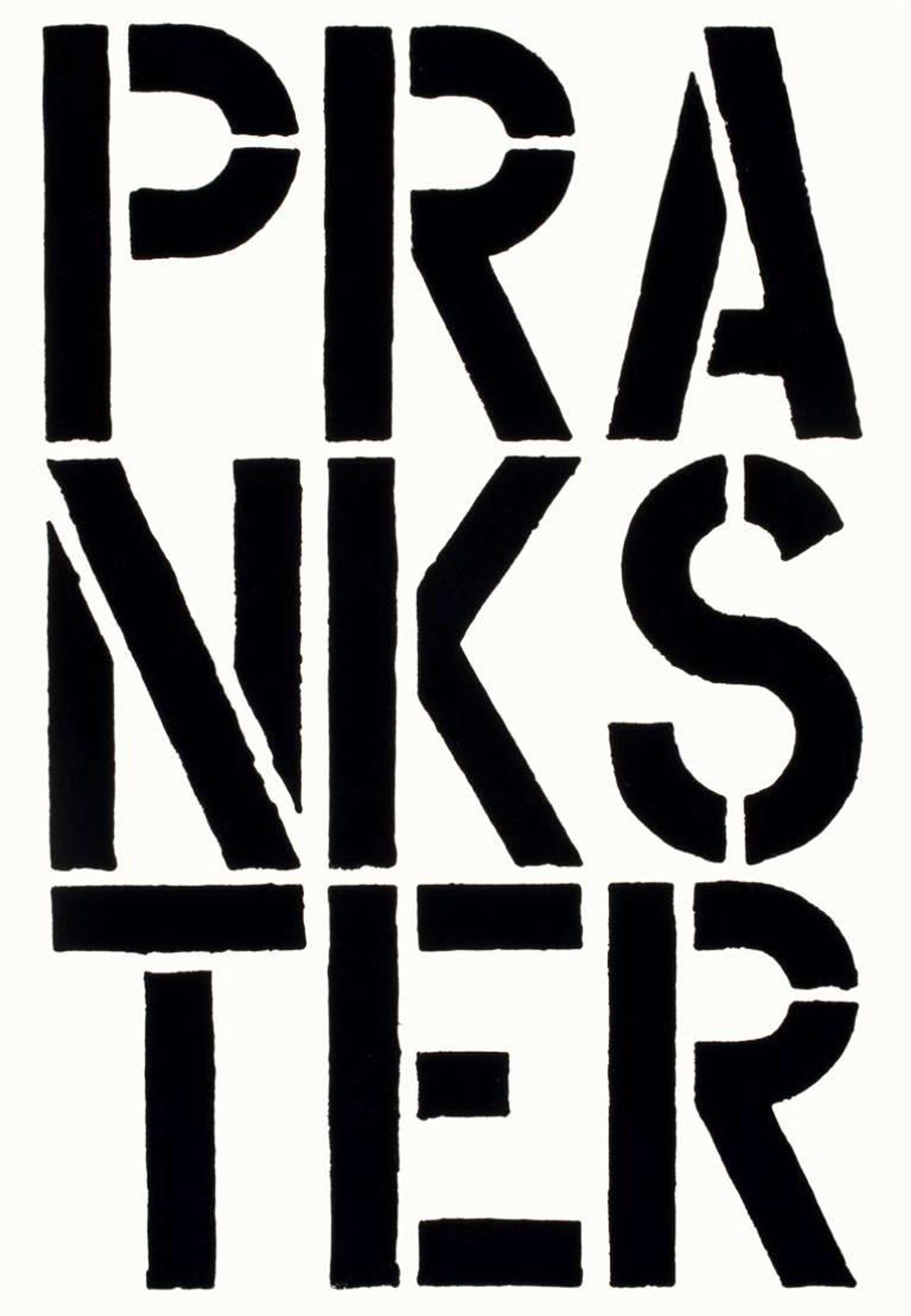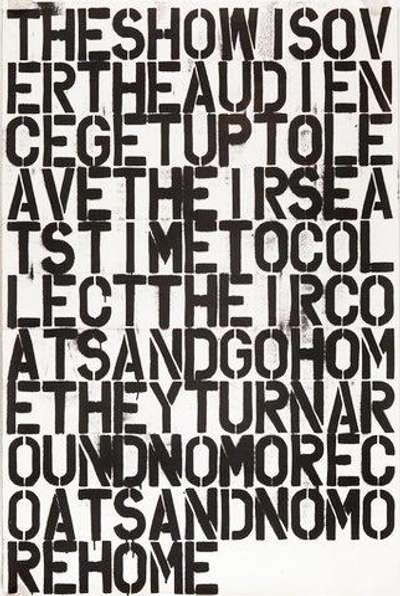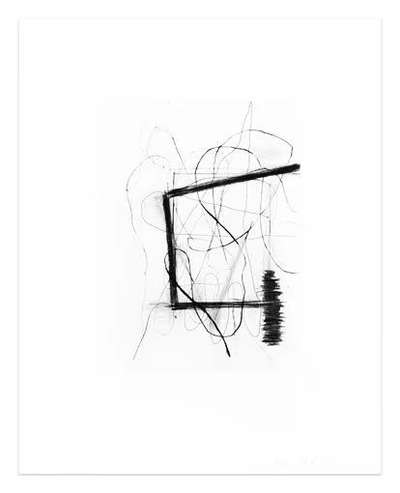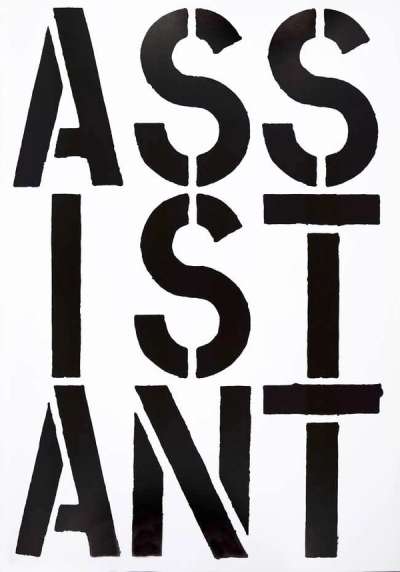 Three Women I © Christopher Wool 2006
Three Women I © Christopher Wool 2006Get a valuation
If you are in the market to sell a Christopher Wool print, here are a few pieces of advice before you start your journey, to make sure you sell at the right time and achieve the right price.
Looking to buy a Wool print? Read our dedicated Christopher Wool Buyers Guide.
One the most important American artists working today, Christopher Wool’s paintings can fetch for up to tens of millions at auction. His prices peaked in 2015, but his limited-edition prints can still achieve thousands, even tens of thousands, on the secondary market today.
How do I work out the value of my Wool print?
Christopher Wool creates three distinct types of prints, each with their own price points and buyers. The first is his black and white text art, which is the artist’s most sought-after in both canvas and paper mediums. While an original of Wool’s Run Dog Run work can cost nearly £12 million at auction, the most expensive single print edition sold in October 2019 for $13,750. A full set of three Run Dog Run prints (edition of 25, plus seven artist’s proofs) can fetch for up to £40,000.
In 1989, Wool released his Black Book series, a limited-edition book of 17 lithographs featuring single words like Hypocrite, Insomniac and Adversary (edition of 350 plus eight artist’s proofs). A complete portfolio can sell for up to £40,000, but individual lithographs can still fetch four-figure sums. The most expensive single from Black Book was Prankster, which sold for $5,760 in January 2017.
The second type of print is text art in colours. While Wool is best known for his stark, black and white text, these colourful works are also popular with collectors. My House, one of Wool’s most expensive paintings at auction, is available in three different colour screenprints (My House I, My House II and My House III, each in an edition of 100 plus artist’s proofs). A print of My House II sold for $40,000 in April 2015 – the highest for a single print in the series – while a full set of three My House screenprints can sell for as much as £60,000.
The last type of print is Wool’s abstract artworks. His print Untitled (Sonic Youth) is among the best-known and most popular, as a detail of the artwork is featured in the rock band Sonic Youth’s 2006 Rather Ripped album cover. The most expensive edition of Untitled (Sonic Youth) sold for $27,500.
Authentication and your Wool print
Most of Wool’s editions include a signature, either signed in pencil or as an emboss of the artist’s name. He also includes in the date and, often, the edition number. For the Black Book folio, Wool’s signature in black pen and the edition number can be found on the justification page. Each single page from Black Book is, however, not individually signed. An unsigned single page from Black Book should be looked at by a specialist to confirm authenticity.
Submit a work today for a full appraisal.
Another way to prove that your print is a genuine work by Wool is to have records of its provenance, tracing the work’s entire ownership history. Having paperwork to prove how you purchased this piece is essential for showing it is genuine.
What if my Wool print needs restoring?
The condition of your Wool print will have a direct influence on its value – if it is in less than perfect condition, it may be necessary to restore the piece in order to achieve the best price.
For screenprints, look for the most common issues affecting works on paper, such as wrinkling or ‘cockling’ from changes in temperature and humidity. You should also check for discolouration of the paper, either due to over-exposure to sunlight or, if there are brown spots, due to bacteria. For his Black Book folio, look carefully for handling creases or scratches, particularly around the paper’s edges and corners.
These are some of the most obvious signs of damage for a print – more information is available in MyArtBroker’s guide to restoring and caring for prints and our experts can also advise you on whether restoration is required.
Ways to Sell with MyArtBroker
At MyArtBroker, our specialists provide a free market valuation for your artwork, offering a level of transparency unmatched in today’s market. In addition to our valuations, through our online Trading Floor, you can access real-time insights into works by the artist you’re looking to sell, including pieces that are most in demand, wanted, or currently for sale: allowing sellers to trust the valuation that they are provided.
Additionally, the MyPortfolio collection management service grants you free access to our comprehensive print market database. This resource allows you to review auction histories for the specific work you’re looking to sell, including hammer prices, values paid, and seller returns. In a fluctuating market, this historical data is invaluable - and often comes at a cost elsewhere - offering insights into past and current values to further inform decisions based on market timing and conditions. In addition to our specialists guidance, you have concrete data.
Our approach is tailored to align with the unique attributes of each artwork, and offer optimal results:
How a Private Sale Works
Unlike peer-to-peer platforms, which lack specialised expertise, authenticity guarantees, and legal infrastructure for high-value sales, MyArtBroker operates through private sales ensuring a secure and seamless transaction process. We charge sellers 0% to sell, and take a small commission from our buyers, absorbing essential aspects including insurance, shipping, and marketing - at no extra cost to the seller. There is no magic to it, we’re a lean specialised business with less overheads than traditional models meaning we can do better for our clients.
Our revenue is derived from buyer commissions only, which are individually negotiated upon offer, and we aim to give the client the best return in the market place. By focusing on high-value artworks in excess of £10,000, we provide specialised care and expertise, ensuring each piece receives the attention it deserves, while simultaneously maximising returns with our clients. For works that fall below this threshold speak to the team about a recommendation, we offer market advisory free of charge. Our goal at MyArtBroker is to offer a seamless solution, setting us apart in the art market.
Advisory and Recommendations
In cases for artists and artworks, where our existing network of collectors isn’t the best fit due to value, medium or condition we collaborate with reputable partners to facilitate its sale. Carefully tailoring your artwork to the right party. This tailored approach is especially important as it considers the unique attributes of each artwork, providing sellers with the best possible outcome in today’s shifting art market. You can discuss this approach with us without charge as part of our advisory service.
Such recommendations are on a case-by-case basis, and ensures broader exposure and takes advantage of our knowledge of where a work will do best.


























